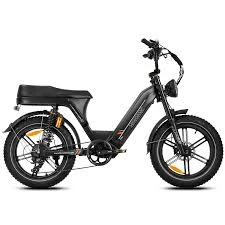9 月 . 09, 2024 14:08 Back to list
adjusting the rear derailleur on a mountain bike
Adjusting the Rear Derailleur on a Mountain Bike
Maintaining your mountain bike is essential for a smooth and enjoyable ride, and one of the key components that require regular adjustment is the rear derailleur. The rear derailleur is responsible for shifting the chain between gear cogs, allowing you to change gears effortlessly. Here’s a guide on how to adjust your rear derailleur to ensure optimal performance.
Understanding the Rear Derailleur
Before diving into adjustments, it’s important to understand the structure of the rear derailleur. It consists of several components the jockey wheels, the body, and the limit screws. The derailleur moves the chain between gears when you shift using the shifters on your handlebars.
Tools Needed
You’ll need a few basic tools a Phillips screwdriver, a 5mm Allen wrench, and possibly a bike lubricant
. Having these handy will make the process more efficient.Step-by-Step Adjustment
adjusting the rear derailleur on a mountain bike

1. Check for Cable Tension Start by inspecting the cable tension. If the cable is too slack, the derailleur won’t shift the chain properly. Pull the cable tight and re-tighten the cable clamp.
2. Limit Screws Adjustment There are two limit screws on the rear derailleur, usually marked as ‘H’ (high) and ‘L’ (low). The ‘H’ screw adjusts how far the derailleur can move towards the smallest sprocket, while the ‘L’ screw limits movement towards the largest sprocket. Shift to the highest gear and adjust the ‘H’ screw until the chain sits smoothly on the smallest cog without rubbing against the derailleur. Repeat this process for the ‘L’ screw with the lowest gear.
3. B-Screw Adjustment The B-screw adjusts the angle of the derailleur and the distance between the derailleur and the largest cog. Turn the B-screw clockwise to increase the distance and counterclockwise to decrease it. This is crucial for proper shifting performance, especially when using a larger cassette.
4. Test Shifting Shift through all the gears to check for smooth transitions. Pay attention to any skipping or hesitation, which indicates that further adjustments may be necessary.
5. Final Touch If you notice any noise or misalignment, consider lubricating the chain and derailleur components to reduce friction and enhance performance.
Conclusion
Regular adjustments to your rear derailleur are vital to ensure a smooth, efficient ride on your mountain bike. By following these steps, you’ll improve your bike's shifting performance and extend its lifespan. Remember, practice makes perfect, so don’t hesitate to make adjustments until you achieve the ideal setup for your riding style. Happy trails!
-
The Main Application Scenarios of Mountain Bike
NewsOct.29,2024
-
Suggestions for Selecting and Maintaining Mountain Bike
NewsOct.29,2024
-
Characteristics of Kids Balance Bike
NewsOct.29,2024
-
Characteristics of Baby Stroller
NewsOct.29,2024
-
Characteristics and Advantages of Mountain Bike
NewsOct.29,2024
-
Baby Stroller Purchasing Suggestions
NewsOct.29,2024
-
Suggestions for Purchasing Kids Balance Bike
NewsOct.09,2024

